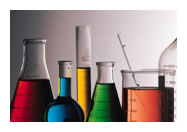How To Find “Subject Matter Of Invention”Lipase Case
Lipase Patent Application
The “lipase” is one of the digestive enzymes for digestion of food, and is called “lipolytic enzyme.” A test on the level of lipase in the blood yields important results on a pancreatic disease such as pancreatitis based upon the fact that an increase in the level of lipase in the blood is caused by the pancreatic-cell disorder and destruction.
The patent application with respect to such a method of determining triglyceride (neutral fats) through the use of lipase was filed with the JPO (Japan Patent Office), but was rejected for lack of inventive step in the appeal stage.The following claim in the patent application recites merely “through the use of lipase.”

What is claimed is:
| A method of determining triglyceride comprising: enzymatically saponifying the triglyceride through the use of lipase in the presence of carboxyl-esterase and alkali metal or alkaline-earth metal alkyl sulfate having 10 to 15 carbon atoms in an alkyl radical thereof; and measuring liberated glycerin, whereby the triglyceride is determined. |
On the other hand, the followings are described in the detailed description of the invention in the specification.
| When overcoming the disadvantage by enzymatically saponifying the triglyceride in a publicly-known manner, lipase from Rhizopus arrhizus (referred to as “Ra lipase”) has been used. In this method, lipase capable of fully decomposing the triglyceride into fatty acid and glycerin in an aqueous buffer solution within an acceptable period of time has been unexpectedly discovered. It has been found that other sorts of lipase, known pancreas lipase in particular, are unsuitable. |
In such a manner, the detailed description of the invention describes the discovery that the “Ra lipase” decomposes the neutral fats within a certain period of time.
To High Court
With respect to the patent application, a notice of final rejection was issued in the examination stage, and request for appeal against the final rejection was filed. The claim term “lipase” was construed by the JPO’s Board of Appeal as encompassing all sorts of “lipase.” Based upon such claim construction, the Board of Appeal affirmed the Examiner’s final rejection for lack of inventive step.
The applicant (appellant) filed a lawsuit in the Tokyo High Court for cancellation of the JPO’s decision. In the judgment, the Tokyo High Court canceled the JPO’s decision of final rejection by holding that:
| The term recited in the claim is “lipase.” It is regarded, however, as being “Ra lipase” by referring to the descriptions in the detailed description of the invention in the specification. From this viewpoint, the JPO’s decision erred in construing the basic structure of the invention. |
The JPO filed a petition of final appeal with the Supreme Court against the above judgment.
Opinion Of Supreme Court
The Supreme Court held that:
- A prerequisite is to find the subject matter of the invention. In general, when examining the invention as to novelty and inventive step, it is prerequisite for comparing the invention with documentary prior art that “the subject matter of the invention” in the patent application is found.
- How is the subject matter found? The subject matter of the invention should be found on the basis of the recitations in the claim in the patent application (unless there are any specific circumstances). Only if there are specific circumstances, to refer to the descriptions in the detailed description of the invention in the specification is allowed.
- What are “the specific circumstances”? The two circumstances below are provided.
(1) The technical meaning of the claim recitations could not be understood in an unambiguously clear manner. For example, a circumstance, where a technical term may be understood by a PHOSITA in other technical fields in a different manner, applies.
(2) Another circumstance, where the claim recitations are apparently errors in light of the detailed description of the invention in the specification, applies.
To construe the claim recitations in the above manner relies upon the following:
| It is obviously because “the claims shall recite only matters necessary to specify the invention sought to be patented” is stipulated by Japanese Patent Act, Article 36(5) (somewhat different from the provision under the currently-reformed Act). |
This Case
The above generalities apply with respect to this case in the following manner:
- The claim in the patent application does not recite “lipase” in such a manner that the lipase is limited to a certain lipase.
- The above “specific circumstances” do not apply with respect to this term.
- In view of the above, the term “lipase” recited in the claim in the patent application could not be construed as being limited to the “Ra lipase.”
Nevertheless・・・
The findings of the Tokyo High Court were that the invention in the patent application technically supported as the improved determination method is only a method using the “Ra lipase,” and only examples of the invention using the “Ra lipase” are shown in the specification.
It could not be considered, however, that not to use other sorts of lipase than the “Ra lipase” had been commonly known by a PHOSITA in the technical field of the determination method as the invention in the patent application.
In this view, the claim term “lipase” should not be construed as being limited to the “Ra lipase” merely on the basis of the fact that only the invention using the “Ra lipase” is technically supported, and only the examples using the “Ra lipase” are shown in the detailed description of the invention in the specification.

Whereas, the opinion of the High Court was that the “lipase” recited in the claim directed to the invention in the patent application should be construed as implying the “Ra lipase,” and that the enzyme adopted in the invention should be limited to the “Ra lipase.”
The High Court erred in construing or applying the act for finding the subject matter of the invention in the patent application, that should be prerequisite for examining the invention as to whether the invention meets the inventive-step requirements or not. It is apparent that such errors in the opinion would sway the High Court in the judgment.
It was concluded that the erroneous judgment of the High Court should be vacated, and this case should be remanded to the High Court.
Relation With Technical Scope
Japanese Patent Act, Article 70 stipulates the relation between “the claims” and “the detailed description of the invention,” that is similar to that held by the Supreme Court.
| Article 70(1): The technical scope of a patent invention shall be determined on the basis of the recitations in the claims in the patent application. |
The provisions in Article 70 are not related to the issue raised in the examination stage, but related to the issue as to how to construe the claims in scope upon which the disputed patent infringement is predicated.
The clause “on the basis of (the recitations in the claims)” in Article 70 implies that to refer to the descriptions in the detailed description of the invention is not excluded in determining the scope of the patent invention.

As a result, up to then, to construe the claims by referring to the detailed description had been carried out in many judgments.
Nevertheless, after judgment on Lipase Case, doubts had been held about the possibility that, even in a patent infringement case, the claim scope would be determined only on the basis of the recitations in the claim in a similar manner.
In reformed Patent Act of 1994, Article 70(2) was newly entered to confirm, according to the previously accumulated court judgments, that the claim scope could be determined by referring to “the detailed description of the invention” in determining whether the patent right is infringed upon or not, in the following manner:
| Article 70(2) :In the case of the preceding paragraph, the meaning of the term recited in the claims shall be construed in consideration of the descriptions in the specification and drawings in the patent application. |
If you have any questions concerning the above, please feel free to contact us by sending email to inter@ypat.gr.jp.
